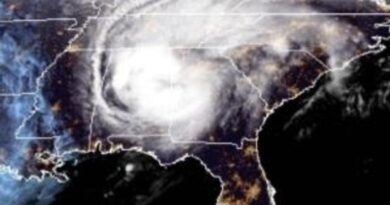Senate Judiciary chair Lindsey Graham releases new details about source of Steele dossier
The primary sub-source for the Steele dossier was the subject of an earlier counterintelligence investigation by the FBI, and those facts were known to the Crossfire Hurricane team as early as December 2016, according to newly released records from the Justice Department that were first reported by CBS News.
The timing matters because the dossier was first used two months earlier, in October 2016, to help secure a surveillance warrant for former Trump campaign aide Carter Page, and then used in three subsequent surveillance renewals.
“Between May 2009 and March 2011, the FBI maintained an investigation into the individual who later would be identified as Christopher Steele’s Primary Sub-source,” the two page FBI memo states. “The FBI commenced this investigation based on information by the FBI indicating that the Primary Sub-source may be a threat to national security.”
The memo, which is a summary of the FBI counterintelligence investigation continues, “in December 2016, the CROSSFIRE HURRICANE team identified the Primary Sub-source used by Christopher Steele and, at that time, became familiar with the 2009 investigation.”
The Republican chairman of the Senate Judiciary committee, Lindsey Graham, who released the FBI records said in a statement, “To me, failure of the FBI to inform the court that the Primary Sub-source was suspected of being a Russian agent is a breach of every duty owed by law enforcement to the judicial system.”
According to the memo, the FBI opened a preliminary investigation in 2009 after receiving information that a “research fellow for an influential foreign policy advisor for the Obama administration” was approached by the individual, later identified as the dossier sub-source, who allegedly inquired about their future “access to classified information” and if they “wanted to “make a little extra money.”
The memo states that the research fellow and co-worker questioned the possibility the individual might be a “Russian spy.”
The preliminary case was converted to a full investigation after a review of FBI databases revealed the individual had contact in 2005 and 2006 with the “Russian embassy and known Russian intelligence officers.”
In 2010, the individual left the US, and the FBI withdrew a surveillance warrant application to the FISA court and closed the investigation. Significantly, the investigative team stated “that consideration would be given to re-opening the investigation in the event that the Primary sub-source returned to the United States.”
The dossier’s primary sub-source did return to the U.S. and was interviewed over a three-day period at the FBI’s Washington Field Office in January 2017 where he described some dossier allegations as “rumor and speculation,” and in other cases did not recognize the claims.
The two-page memo states the case was not reopened, and there is no indication the FISA court was ever told that the dossier source was the subject of an earlier FBI probe.
Separately, other records released in spring 2020, cast doubt on the reliability of the dossier. Declassified footnotes from the December Inspector General’s report into the four surveillance warrants for Carter Page showed that despite multiple warnings that about Russian targeting and the potential for disinformation, the FBI relied on the controversial dossier. Among the revelations, a 2017 U.S. intelligence community report indicated that two individuals “affiliated” with Russian intelligence knew of former British spy Christopher Steele’s “election investigation” in early July 2016, three months before the FBI would begin citing the dossier.
Barr’s cover letter to Graham, including the two-page memo, states that U.S. Attorney John Durham brought the new information to Attorney General Barr’s attention, “which bears upon the FBI’s knowledge concerning the reliability of the dossier.”
Graham has been overseeing the committee’s investigation into Crossfire Hurricane and review of the FISA process. As part of that oversight, Graham announced that former FBI Director James Comey will testify publicly before the committee on September 30 as to his role in the investigation.
Barr has not indicated when the final conclusions of Durham’s investigation will be made public, refusing to get into whether or not the anticipated report will come before the November election, but as noted in this cover letter he has been receiving updates from his handpicked investigator.
The Attorney General tapped Durham to lead the probe in May 2019 and has been global in scope. Earlier this month, the Hartford Courant reported the departure of one of Durham’s top aides due to concerns that Barr was mounting political pressure on the U.S. Attorney’s office to complete the review before it was ready.


